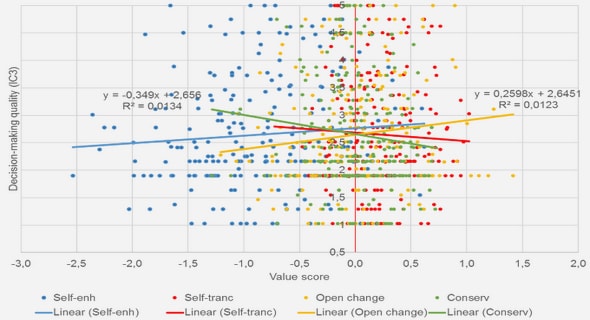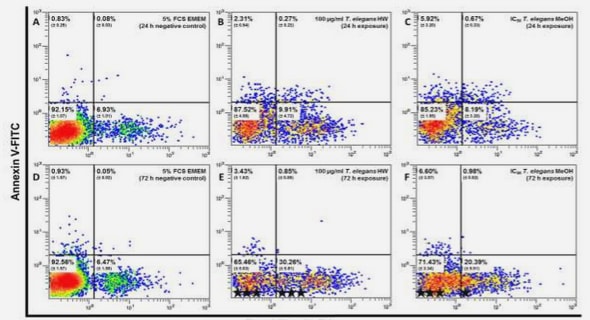Get Complete Project Material File(s) Now! »
Measures
Child behavioural difficulties. Behavioural difficulties during early childhood were measured at age 2 using the preschool version of the Strengths and Difficulties Questionnaire (SDQ) (R. Goodman, 1997). The difficulties subscales (emotional symptoms, peer problems, hyperactivity-inattention and conduct problems) as well as the total difficulties score were of interest in the current study. We have previously found that the preschool SDQ shows acceptable psychometric properties in our cohort at age 2 (D’Souza et al., 2017a); Cronbach’s alpha coefficients were found to be satisfactory for most measures ( range = 0.71-0.84), but low for peer problems ( = 0.54). However, all measures obtained satisfactory mean inter-item correlation coefficients (MIC > 0.20) (Piedmont, 2014).
SDQ subscales range from 0 to 10, and the total difficulties score ranges from 0 to 40. These measures were categorised into normal, borderline and abnormal bands, based on previously determined cut-offs (D’Souza et al., 2017a; R. Goodman, 1997). As the current study is interested in evaluating predictors of clinically significant behavioural difficulties (i.e., the abnormal band) (R. Goodman, Ford, et al., 2000; R. Goodman, Renfrew, et al., 2000), SDQ measures were dichotomised into normal/borderline and abnormal. Children who fall within this abnormal band are generally identified as having serious behavioural difficulties, and are likely to be referred on to a specialist for further assistance (R. Goodman, Renfrew, et al., 2000; Ministry of Health, 2016).
Maternal and family predictors. Information related to perinatal and postnatal maternal health was obtained during the antenatal and 9 month DCWs respectively. The antenatal questionnaire asked mothers about their folate or folic acid intake before pregnancy, during the first trimester, and after the first trimester. The NZ Ministry of Health recommends that women planning on becoming pregnant should take folic acid supplementation at least 4 weeks prior to becoming pregnant and during the first trimester of pregnancy, to ensure healthy development and a reduced risk of neural tube defects in the child (Stewart, 2006). Therefore, for the purpose of this study, a composite variable was created to indicate whether mothers took folate or folic acid supplements during the recommended time frame. Women were categorised as taking folic acid before and during the 1st trimester, during the 1st trimester only, and taking no folic acid.
Information was also obtained on whether or not mothers took multivitamins during pregnancy.
Smoking behaviour during pregnancy (categorised as never smoked, stopped smoking, and continued smoking) as well as frequency of exposure to another smoker in the same room (no exposure vs some exposure) were also included as perinatal variables. Mothers also provided information on alcohol intake per week during the first trimester and after the first trimester, with women being dichotomised into non-drinkers and 1 drink or more categories for each time period. We did not categorise drinkers into light, moderate and heavy drinking groups, as this would have resulted in low cell counts when assessed in combination with SDQ measures.
Information on maternal mental health was also obtained at both the antenatal and 9 month DCWs. Antenatal and postnatal (9 month) depression were measured using the Edinburgh Postnatal Depression scale (EPDS) (Cox, Holden, & Sagovsky, 1987). The scale ranges from 0 to 30, with women who scored 13 or greater categorised as having clinically significant depressive symptoms (Waldie et al., 2015). Perceived maternal stress during pregnancy was measured using the Perceived Stress Scale (PSS) (S. Cohen, Kamarck, & Mermelstein, 1983). Postnatal anxiety was measured at 9 months using the Generalised Anxiety Disorder Screener (GAD-7) (Spitzer, Kroenke, Williams, & Löwe, 2006), with mothers categorised as having minimal anxiety (scores of 0 to 4), mild anxiety (scores of 5 to 9), and moderate to severe anxiety (scores of 10 to 21).
Duration of exclusive breastfeeding was obtained when the child was aged 9 months. WHO recommends that infants should be exclusively breastfed for a minimum of 6 months (World Health Organization, 2001), therefore children were categorised as either being exclusively breastfed for less than 6 months, or 6 months or more. Measures of physical and verbal conflict within the parental relationship at 9 months were obtained using 6 items measured on a 7-point Likert scale. Both physical and verbal conflict were measured using three items each, which asked about the
frequency of conflict behaviours in the past four weeks. These items have been used previously within a NZ population and have obtained good reliability coefficients (Pryor, 2004).
Chapter 1: General Introduction
1.1 Why study behavioural difficulties in early childhood?
1.2 Stability of behavioural difficulties in early childhood
1.3 Predictors of behavioural problems in early childhood
1.3.1 Theoretical framewor
1.3.2 The perinatal period
1.3.3 Maternal mental health
1.3.4 Family processes
1.3.5 Predictors of stability
1.4 Comorbid difficulties of children with behavioural problems
1.5 Assessing behavioural difficulties in early childhood …
1.6 Growing Up in New Zealand
1.7 Thesis rationale
Chapter 2: The parent-rated Strengths and Difficulties Questionnaire in two-year-olds
2.1 Chapter prologue
2A. Psychometric properties and normative data for the preschool Strengths and
Difficulties Questionnaire in two-year-old children (Study 1
Chapter 3: Antenatal and postnatal determinants of behavioural difficulties in early
childhood: Evidence from Growing Up in New Zealand (Study 3)
3.1 Chapter prologue
3.3 Introduction
3.4 Methods
3.5 Results
3.6 Discussion
3.7 Summary
Chapter 4: Persistence and change in behavioural problems during early childhood (Study
Chapter 5: The association between early childhood behavioural problems and preschool
cognitive outcomes (Study 5)
Chapter 6: Determinants of persistence and change in early childhood behavioural
problems: the roles of parenting and maternal mental health (Study 6)
Chapter 7: General Discussion
GET THE COMPLETE PROJECT
Behavioural Difficulties in Early Childhood: Findings from a Longitudinal Birth Cohort


